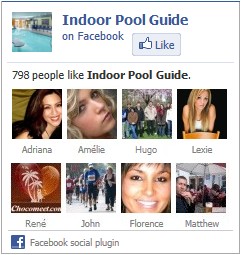
Chlorine Gas (Cl2)
Chlorine gas has 100% available strength, is very toxic and can be lethal if an operator is overcome by it. This form of chlorine is the most economical, pound for pound, but the laws regarding safety practices and the intricate feeding equipment it requires make it a feared method of water sanitation. Chlorine gas for pool use is contained under pressure in steel tanks as large as one ton. The gas is green in color and heavier than air.
Strict adherence to the following practices is required for minimum safety:
1. Chlorine tanks should always be sto red indoors in a fire-resistant building.
2. Tanks and chlorinator must be kept in a separate room with a vent fan capable of complete air exchange in one to four minutes.
3. Tanks must be chained or strapped to a rigid support to prevent accidental tipping.
4. A self-contained air supply gas mask must be immediately available in case of emergencies.
5. The chlorinator and all tanks should be checked daily for leaks. A small amount of ammonium hydroxide (household ammonia) on a piece of cloth produces white vapor i n the presence of chlorine.
Sodium Hypochlorite (NAOCl)
Sodium hypochlorite is a clear, slightly yellow liquid solution used in dilute form as common household bleach. In its commercial form, it provides 12% to 15% available chlorine. The chemical is usua lly introduced to pool water through a chemical feeder, but it can be poured directly into the pool for a quick increase in chlorine residual. It has no sediment or precipitate and raises Total Dissolved Solids (TDS). This chemical has a pH of 13 and causes a significant increase in the pool’s pH. The occasional addition of muriatic acid or sodium bisulfate can correct the increased pH, however.
Sodium hypochlorite is not stable in storage and gradually loses strength, especially in sunlight. If stored in a dark, cool room, it has a one-month shelf life.
Dilute solutions of sodium hypochlorite can be used for poolside sanitation and for disinfecting and cleaning decks. The chemical should not be spilled directly on clothes and should be immediately washed off if it gets on the skin. However, its safety and low cost has made this a very popular chlorinating agent.

